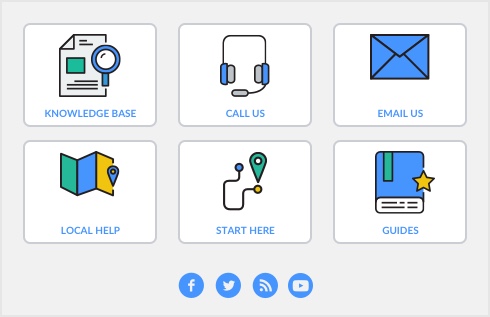Backing up is the copying of a company file to some form of storage medium, such as a floppy disk, CD, a different hard disk or other media. You can also use the backup function in AccountEdge to create a compressed archive file that takes up less space. The archive file has a ‘.ZIP’‘.sit’ extension.
The Restore command closes the company file you’re currently using, decompresses a backup file so you can use it, and then opens the backup file.
You can back up and restore your company file to Dropbox from the File menu or when you are prompted to back up your file, for example, when you close your company file.
|
▪
|
Take care when backing up multi-user company files If multiple users access a company file on a host computer, always back up the company file that is stored on the host—especially if you create custom forms and templates on the host computer and then copy them to workstations.
|
|
▪
|
Don’t store backups on the same hard disk as the software A single disaster can wipe out all your records.
|
|
▪
|
Make separate backups A disk failure can corrupt your data in such a way that you may not notice it during a session. If you accidentally copy some corrupted data over your previous backup file, that backup is no longer valid. Without a valid backup, you would need to re-create your company file. You can reduce this risk by making separate backups to protect your company data—for example, at the end of each business day.
|
|
▪
|
Store backups offsite Store monthly and yearly backups in a safe place, preferably away from your office. Except for daily rotational backups, do not reuse media.
|
The Backup command creates a backup of the company file you are currently using and compresses it to a smaller, more manageable size.
|
1
|
caution : If the backup process does not work
|
▪
|
To back up your company file and templates, click Back up all data.
|
|
▪
|
To back up your company file only, click Back up Company File only.
|
|
▪
|
To check for errors, click Check Company File for errors.
|
|
▪
|
To prevent error checking, click Do not check Company File for errors.
|
note : Maintaining data integrity
|
▪
|
|
▪
|
To back up to a Dropbox account, select To Dropbox.
|
Note that before you can back up to Dropbox, you must have a Dropbox account. For more information about Dropbox, go to the Dropbox.com website.
|
5
|
Click Continue.
|
|
▪
|
|
▪
|
If you selected the Check Company File for errors option, note that this verification process may take several minutes.
|
|
6
|
Click OK in the window that appears when the verification process has finished. This window appears whether or not errors have been found in the company data file.
|
|
7
|
If you selected the To a Disk option in step 4, in the Save window that appears, select where you want to store the backup file.
|
|
|
9
|
Click Save.
|
|
1
|
Go to the File menu, choose Restore and then choose the From a Disk option. The Open window appears.
|
|
2
|
Locate the backup file you want to restore, select it and click Open. The Choose a Folder window appears.
|
|
4
|
Click Choose. A message appears showing the file name and location of the company file.
|
|
5
|
note : Restoring from a CD
If you are restoring a backup file from a CD, the file will be read-only. To read data from the file, you need to change the file’s attributes. To do so, locate the restored file using Finder and click the file to select it. From the File menu, click Get Info and deselect the Locked option.
|
1
|
|
2
|
The Open window appears displaying the location where you can find your backup file. Select the file you want to restore and click Open.
|
|
3
|
The Choose a folder window appears. Select a destination folder for the restored company file.
|
|
4
|
Click Choose. A message appears showing the file name and location of the company file.
|
|
5
|

